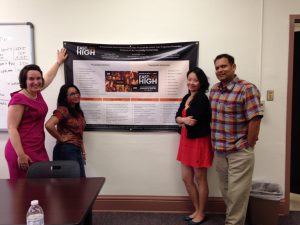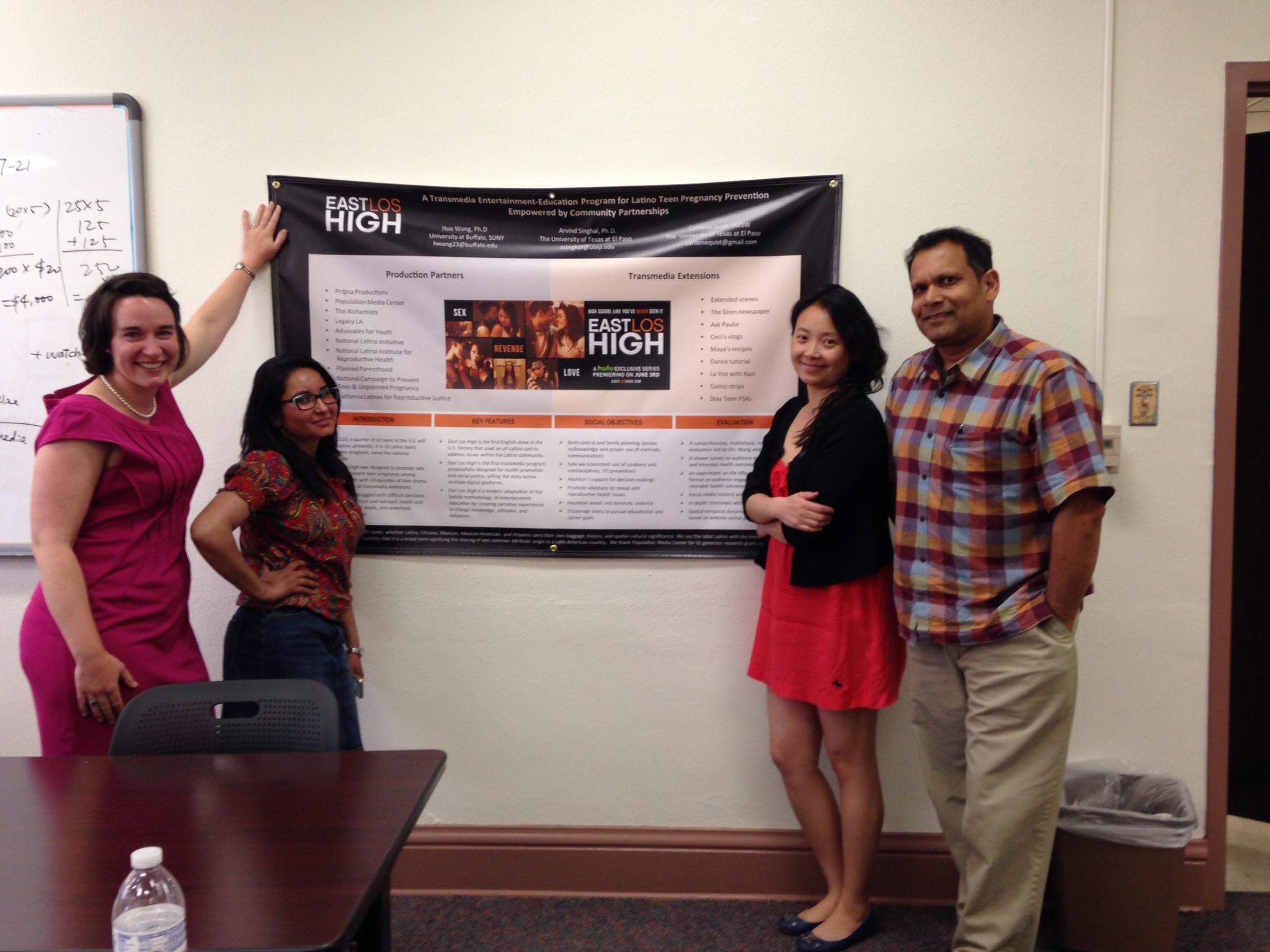By Lisa Y. Garibay
UTEP News Service
One of today’s most groundbreaking TV series will premiere its second season on July 9 thanks to work being done by UTEP faculty and students.

Technically speaking, East Los High is a web-based series broadcast by the video-on-demand service Hulu. But many viewers use the term “television” interchangeably when it comes to watching an ongoing series on a computer, mobile device or an actual TV.
This first-ever English-language series with an all-Latino cast was the product of three years of dedicated effort by creators Carlos Portugal and Kathleen Bedoya and executive producer Katie Elmore Mota. The series is set within an East Los Angeles high school, and tells the highs and lows experienced by many high school students with a focus on the fastest-growing demographic segment in the United States – Latinos.
The show is unique in its incorporation of the very new transmedia technique, which uses multiple platforms — from web browsers to smartphone apps and social media — to provide an engaging experience. A variety of other agencies such as Girls, Inc. Latina Initiative and the National Campaign to Prevent Teen & Unplanned Pregnancy signed on to help further the show’s mission of empowering young Latinos with information to make smart health and lifestyle choices.
It was this combination of trailblazing innovation, community partnership and heartfelt storytelling that made East Los High a huge and unexpected success in its first season, and much more than mere entertainment.
Hulu CEO Andy Forrsell stated the series “exceeded our expectations as one of the top 10 shows on Hulu during its premiere month,” while other Hulu sources said East Los High had performed on par with hits like Grey’s Anatomy and The Daily Show with Jon Stewart.
When it was time to assess the impact of the series, its creators turned to UTEP’s Arvind Singhal, Ph.D.
“When you are a professor of communication and social change at UTEP, with Latino youth all around you, then it would be hard not to say yes to researching East Los High,” Singhal said.
He partnered with Helen Wang, Ph.D., an assistant professor of communication at University at Buffalo, The State University of New York, to lead a comprehensive evaluation of East Los High. Their research included data tracking of visitors to the show’s website, viewer surveys, an experiment on storytelling format, an extensive social media content and network analysis, and interviews with fans.
Singhal and Wang’s analysis has proven the value of East Los High not only do its broadcaster — thus ensuring a second season — but also to other scholars looking to assess the effects of transmedia and the concept of entertainment-education.
Some of the data collected by the team proves the series is packing a punch. People from all 50 U.S. states and the District of Columbia visited the show’s website with high proportions of visitors located in states with the highest Hispanic and Latino populations. Visitors from an additional 163 countries also reached the site. Most viewers of the show went on to experience the rest of its transmedia content of blogs, extended scenes and websites of partner organizations advocating for safe sex and pregnancy prevention.
Finally, respondents gave the show very high ratings in terms of storyline appeal and the enjoyment of both the drama and transmedia extensions, while also indicating they wanted more programs like it.
“East Los High, in my opinion, is a dream entertainment-plus project — one that is designed to engage audiences at multiple levels, through parallel and intersecting plots unfolding on various media platforms, and create the enabling conditions for them to live healthier, safer and happier lives,” Singhal said.
The professor and researcher has been designing, implementing and evaluating entertainment-education campaigns in dozens of countries for 30+ years, also writing a number of texts and research articles on the same topic. Given his extensive exposure to programming attempting to accomplish what East Los High has, Singhal marks the series as a “gold standard” for its narrative complexity, creativity and ability to engage the Latino creative community in creating a show about issues that matter to Latino youth.
Singhal brought in UTEP students like Carliene Quist, who received her master’s degree in social work last May, to work with him on the project. She was thrilled to be employed immediately upon graduation.
“I’m practicing social work and developing invaluable research skills and relationships which are inspiring future Ph.D. study in comprehensive, interdisciplinary program evaluation to reinforce the objectives of social change initiatives,” she said. Quist presented results from the study at a national health conference this spring.
Anu Sachdev is doing a master’s thesis within UTEP’s Communication Department titled “Effects of East Los High, an entertainment-education web series, on sexual decision making of young Latino/a couples in El Paso.” She is currently conducting interviews at UTEP with Latino/a couples between the ages of 18 and 24.
“So far, it’s been super interesting talking to these couples who are articulating what this show means for them and how it has an impact on their sexual decision making. All the couples that have been interviewed up to now have said that it is a lot of fun,” said the master’s candidate, who is working in an official capacity as Singhal’s graduate research assistant.
Results of a broader study of the show’s effect within the local El Paso population are forthcoming.
Over the past three decades of work Singhal has done towards entertainment-education in dozens of countries, he rates East Los High as the most farsighted, cutting-edge project, one which sets a new bar in terms of 360 degree transmedia storytelling for social change.
“To be invited to co-lead its research assessment with the brilliant Dr. Wang is an honor to cherish,” Singhal said. “The program has topnotch production values, made of, by, and for Latino/a audiences, and focuses on issues salient to their lives. Most significantly, it demonstrates that Hollywood and its audiences have an appetite for entertainment with added social value.”
As codirector of the project, Wang feels connected to the series on many levels, both personally and professionally.
“Growing up in China, I have always had a strong sense of social responsibility,” Wang said. “So when I chose the intersection of new technologies, social networks, health promotion and social change as my research focus, I was very happy and proud because all the hard work brings meaning and impact to the real world. Sexual and reproductive health are critical for young women and men. So much adversity can be completely prevented or properly addressed.”
Wang had been inspired by Singhal’s previous work and was excited to be given the opportunity to work with him on East Los High. “It has presented us unprecedented opportunities for some cutting edge research and I am grateful and honored to be part of this collaborative journey,” she said.
Wang is also grateful to have had UTEP’s enthusiastic participation in the study, both to date and for future efforts. “I am always amazed by the students’ enthusiasm about learning and their inspiring team spirit,” she said. “I feel very fortunate to be able to meet and work with so many fun and talented students at UTEP, without whom our project would not have been possible to realize.”
